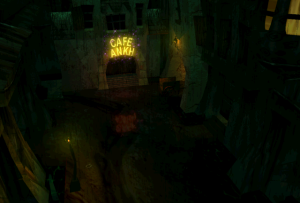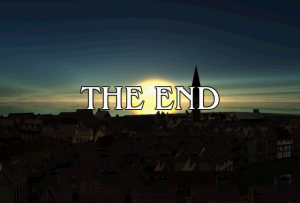Since obviously I have nothing better to do, here’s a description of loop filter in Bink2 as much as I understand it (i.e. not much really).
First, the loop filter makes decision on two factors: motion vector difference between adjacent blocks is greater than two or it selects filter strength depending on number of coefficients coded in the block (that one I don’t remember seeing before). The filter is the same in all cases (inter/intra, luma/chroma, edge/inside macroblock), only the number of pixels filtered varies between zero and two on each side (more on that later). This is nice and elegant design IMO.
Second, filtering is done after each macroblock, horizontal edges first, vertical edges after that—but not necessarily for all macroblocks. Since BIKi or BIKj encoder can signal “do not deblock macroblocks in these rows and columns” by transmitting set of flags for columns and rows.
Third, in addition to normal filtering decoder can do something that I still don’t understand but it looks like whole-block overlapping in both directions (and it is performed in actual decoding but I don’t know what happens with the result of it).
And the filter itself is not that interesting (assuming we filter buf[0] buf[1] | buf[2] buf[3]:
diff0 = buf[2] - buf[1] + 8 >> 4;
diff1 = diff0 * 4 + 8 >> 4;
if (left_strength >= 2)
buf[0] = clip8(buf[0] + diff0);
if (left_strength >= 1)
buf[1] = clip8(buf[1] + diff1);
if (right_strength >= 1)
buf[2] = clip8(buf[2] - diff1);
if (right_strength >= 2)
buf[3] = clip8(buf[3] - diff0);
Strength is determined like this: 0 — more than 8 coefficients coded, 1 – MV difference or 4-7 coefficients coded, 2 — 1-3 coefficients coded, 3 — no coefficients coded.
Overall, the loop filter is nice and simple if you ignore the existence of some additional filter functions and very optimised implementation that is not that much fun to untangle.
Update: the alternative function seems to be some kind of block reconstruction based on DCs. In case it’s intra block with less than four coefficients coded it will take all neighbouring DCs, select those not differing by more than a frame-defined threshold and smooth the differences. I still don’t understand its purpose in full though.

